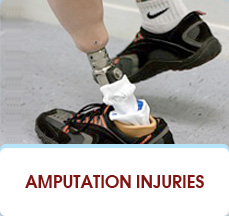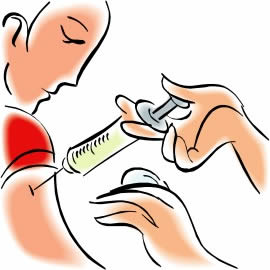Kinds of Physical Disabilities
There are various kinds of Physical Disabilities
Contents
Disability due to Multiple Sclerosis
The disease
Multiple sclerosis (MS) is a disease in which there is degeneration of the nerves of the central nervous system (brain and spinal cord).There is slowing down of the electrical impulses that travel along the nerves. In addition, the nerves also get damaged. A person faces problems with functions that are controlled by the nervous system such as vision, speech, walking, writing, and memory.
Symptoms
Visual disturbances like patch of blurred vision, red-to-orange or red-to-gray distortions (color desaturation),loss of vision in one eye or pain in the eye. Limb weakness Attention deficit Muscle spasms, fatigue, numbness, and prickling pain. Difficulty in judgement Sometimes loss of sensation, speech impediment, tremors, or dizziness. Some degree of memory loss Depression Sexual dysfunction and bladder control problems
Treatment
Medications can help ease MS attacks and possibly slow the disease.Sometimes surgical methods are also used. Physical therapy and other treatments help control symptoms -- and improve the quality of life.Alternative therapy includes a variety of disciplines that range from diet and exercise to mental conditioning to lifestyle changes. Examples inclusion of acupuncture, yoga, aromatherapy, relaxation, herbal remedies, and massage.
Management
With pain and difficulty in movement, one may feel it a too heavier load to bear.The patient needs to manage the life style to cope up with the problem. The patient needs to learn to manage stress and maintain a positive physical, emotional and spiritual attitude towards life.A counselor can help the patient in that by designing strategies to gain a sense of control over life and thus improving the quality of life.. One needs to take care of oneself. Healthy , exercise, de-stressing techniques can help along with enough rest. One needs to consider life-planning issues, such as finances, work, adapting of home, and other practical issues. One needs to be proactive in health and educated.
Disability due to Polio
Disability due to Muscular Dystrophy
Disability due to Amputation
Sometimes it may be necessary to remove a limb or a part of limb from the body because of peripheral vascular disease, malignant disease, injury (trauma), or congenital deformity. In elderly people gangrene of part of the lower limb can be the reason behind amputation. Congenital absence of limbs or parts of limbs may have much the same effect as amputation.
After amputation one needs to use an artificial limb, or part of a limb, is known as prosthesis. It may be functional or cosmetic like many of those used in upper limbs. Their effectiveness depends on the level of amputation. Mobility will not be much affected but there can balance problems.
Complications after amputation
There can swelling (oedema) of the stump, infection, friction which may lead to blisters and sore areas, or skin problems. Bony spurs or of bone and painful nerve swellings may be there.
The person may feel that the lost limb is still there (phantom sensation) and occasionally this may be painful (phantom pain). There may be problems in other areas such as the back or the remaining limb. There can be onset of arthritis because of dependence on the remaining limb. Walking may be fatiguing, and the quality of walking will be less than that of a person whose amputation is at a lower level.
Balance problems may occur with amputation at any level, even the toes, especially the great toes.
There can twisting of the spine (scoliosis) causing chronic back pain and balance problems.
Rehabilitation
Once the wound is healed the person is given prosthesis and is trained to walk with the help of aids such as a stick or walking frame.
Achievement of functional level would depend on the age, physical and mental fitness of the person; their motivation; the level of amputation and construction of the stump; and the availability of rehabilitation programmes. Rehabilitation cab be delayed due to obesity. Some people with above knee amputation may have to depend on wheelchairs.
Treating Pain after Amputation
The pain after amputation is quite complicated and can be very difficult to treat.
Appropriate for pain management include but not limited to :
1. Proper fitting of prosthesis
2. Physical therapy, exercises, transcutaneous electrical nerve stimulation (TENS) units and related treatments
3. Techniques of relaxation and stress management
4. Therapies including biofeedback, cognitive and behavior
5. Medications that are Non-steroidal anti-inflammatory(NSAIDs)
6. Sometimes there is use antidepressants and neuroleptic agents
7. Oral opiod analgesics
8. Muscle relaxants

